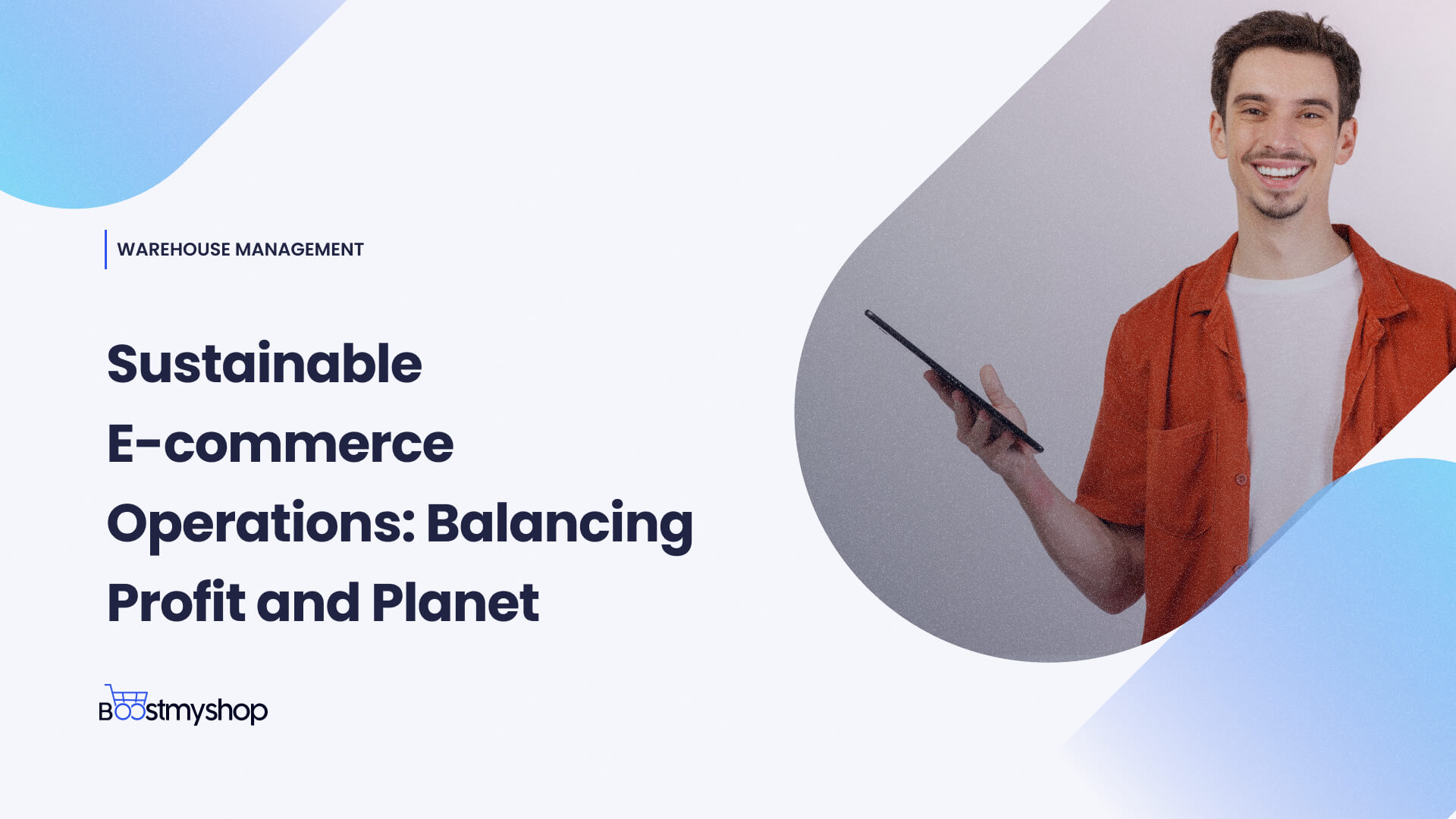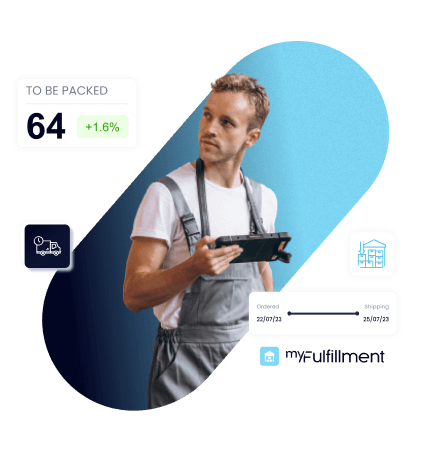Sustainable E-commerce Operations: Balancing Profit and Planet
How Efficient Inventory Management Reduces Waste and Environmental Impact
The Hidden Environmental Cost of Poor Inventory Management
Poor inventory management creates significant environmental waste in several ways:
- Overstock situations result in unsold products that may eventually be discarded
- Rushed reordering often requires expedited shipping with higher carbon emissions
- Inaccurate forecasting leads to production of unwanted goods and resource waste
- Product obsolescence increases when items sit in warehouses too long
- Excessive storage space requires more energy for climate control and lighting
Smart Inventory Solutions for Waste Reduction
Modern inventory management systems like Boostmyshop’s myFulfillment offer powerful tools to minimize environmental impact:
- Real-time inventory visibility across all sales channels prevents overordering and underordering
- Data-driven demand forecasting helps merchants anticipate customer needs more accurately, reducing both stockouts and excess inventory
- Automated reorder points ensure optimal stock levels are maintained without wasteful overstock
- Inventory aging reports highlight slow-moving items before they become obsolete
- Multi-warehouse management allows strategic stock placement closer to customers, reducing shipping distances
For example, with Boostmyshop’s advanced stock tracking features, merchants can reduce inventory holding by 20-30% while maintaining service levels, significantly decreasing the resources needed for storage and the potential for product waste.
The Role of Technology in Creating More Sustainable Supply Chains
Digital Transformation as an Environmental Strategy
Technology is revolutionizing supply chain sustainability through:
- End-to-end visibility that identifies inefficiencies and waste points
- Blockchain technology for verifying sustainable sourcing claims
- AI and machine learning for optimizing routes and predicting demand patterns
- Cloud-based systems that reduce the need for energy-intensive on-premise servers
- Integrated platforms that minimize duplicate efforts and resource use
How Integrated Systems Drive Sustainability
Boostmyshop’s integrated approach to e-commerce operations creates sustainability advantages:
- Connected systems eliminate data silos and redundant processes that waste resources
- Centralized order management reduces the risk of duplicate shipments and returns
- Supplier integration facilitates just-in-time inventory practices that minimize waste
- Real-time analytics help identify sustainability improvement opportunities
- Paperless operations through digital documentation and automated workflows
By connecting inventory, order processing, and shipping within one system, merchants using Boostmyshop solutions can reduce administrative waste while making more environmentally sound operational decisions.
Ways Boostmyshop Helps Merchants Optimize Packaging and Shipping for Sustainability
Smarter Packaging Decisions
Packaging is often the most visible environmental impact of e-commerce. Boostmyshop’s solutions help merchants make greener packaging choices:
- Package dimension optimization suggests the most appropriate packaging size for each order, reducing excess materials
- Multi-order consolidation identifies opportunities to combine multiple orders going to the same customer
- Packaging material tracking helps businesses monitor and reduce packaging consumption
- Supplier packaging feedback loops allow merchants to work with vendors on reducing incoming packaging waste
Eco-Friendly Shipping Optimization
Transportation represents another significant environmental impact area where technology can help:
- Route optimization reduces miles traveled and associated carbon emissions
- Carrier selection tools that include environmental impact ratings
- Delivery density planning to maximize efficiency of each delivery route
- Carbon offset integration to balance unavoidable shipping emissions
- Batch processing to consolidate shipments and reduce transportation frequency
With Boostmyshop’s fulfillment solutions, merchants can easily identify the most efficient shipping methods and consolidate orders, potentially reducing shipping-related carbon footprint by up to 25%.
The Business Case for Sustainable E-commerce Operations
Sustainability initiatives aren’t just good for the planet—they’re increasingly good for business:
Cost Savings Through Efficiency
- Reduced inventory carrying costs through optimized stock levels
- Lower shipping expenses through better route planning and package optimization
- Decreased waste management costs by generating less excess material
- Energy savings through more efficient warehouse operations
- Fewer markdowns on obsolete or excess inventory
Customer Loyalty and Brand Reputation
- 73% of global consumers say they would definitely change their consumption habits to reduce environmental impact
- Brands with strong sustainability credentials enjoy 4-6% higher customer loyalty rates
- Eco-friendly practices create positive brand associations and word-of-mouth marketing
- Transparent sustainability efforts build trust with increasingly conscious consumers
Competitive Advantage
- Sustainability is becoming a differentiator in crowded marketplaces
- Early adopters of sustainable practices often see improved market positioning
- Forward-thinking approaches attract partnerships with like-minded brands
- Preparation for inevitable regulatory changes around environmental impact
Getting Started: Practical Steps Toward Sustainable E-commerce
For e-commerce businesses looking to enhance sustainability while maintaining profitability, consider these action steps:
- Conduct an inventory management audit to identify waste and inefficiency
- Implement integrated inventory technology like Boostmyshop’s myFulfillment
- Analyze shipping data to find consolidation and optimization opportunities
- Review packaging practices and test more sustainable alternatives
- Set measurable sustainability goals tied to business performance metrics
- Communicate your sustainability efforts transparently to customers
- Train staff on the importance of sustainability practices
Conclusion: A Balanced Approach to Profit and Planet
The future of e-commerce belongs to businesses that can successfully balance profit and environmental responsibility. With solutions like those offered by Boostmyshop, merchants can transform their operations to reduce waste, optimize resources, and minimize environmental impact—all while improving their bottom line.
By embracing efficient inventory management, leveraging integrated technology, and optimizing packaging and shipping, e-commerce businesses can build operations that are not just sustainable for the planet, but sustainable for their long-term business success as well.



